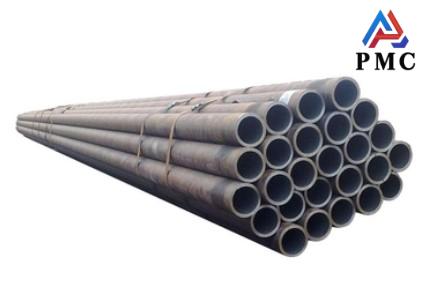
Advantages and Disadvantages of Carbon Steel ERW Pipes
Carbon steel erw pipe, also known as carbon steel straight seam electric resistance welded pipe, occupies an important position in the industrial field due to its unique advantages. It uses carbon steel as raw material, and through the skin effect and proximity effect generated by high-frequency current, the edge of the tube blank is quickly heated to the welding temperature, and a firm weld is formed after extrusion and cooling.
Carbon steel erw pipes specifications
Carbon steel erw pipe are available in different grades and standards. Some of the standard features these are made available in include.
Standard: ASTM 5L, ASTM A53, ASTM A178, ASTM A500/501, ASTM A691, ASTM A252, ASTM A672, EN 10217
Out Diameter:1/2"-24"
Wall Thickness: 1.65-20mm
End : Plain End, Beveled End, Treaded
Length : 3-12m, or according to customer’s requirement
Schedules : SCH 40, SCH 80, SCH 160, SCH XS, SCH XXS, All Schedules
Materials : Q235, Q345, A53B, A106B, API 5L B, X42, X46, X52, X60, X65

What are the characteristics of carbon steel erw pipe?
1. The weld quality is high, no welding materials are added during the welding process, and the weld metal undergoes a recrystallization process and has the same chemical composition as the base material. If annealing is performed after welding, both the cold working internal stress and the welding internal stress can be improved, and the comprehensive mechanical properties are better.
2. High precision is also a highlight of carbon steel erw pipes. The pipe diameter tolerance can be controlled within ±0.5%, and the ovality tolerance is within ±0.3%, which can meet application scenarios with high requirements for dimensional accuracy.
3. Fast production speed is also an advantage of carbon steel erw pipes that cannot be ignored. It adopts continuous assembly line operation, and its production efficiency is 30% - 50% higher than some traditional pipe making processes, which greatly reduces production costs and can quickly respond to large market demands.
Advantages and disadvantages of carbon steel erw pipe
Advantages
1. The biggest advantage of carbon steel erw pipe is its low cost. Because it is produced in a continuous assembly line, the production efficiency is 30% - 50% higher than some traditional pipe making processes, which greatly reduces the production cost.
2. Its application range is also extremely wide, ranging from supporting components in building structures, to oil and natural gas pipelines, to parts processing in mechanical manufacturing and other fields.
3. In addition, the processing of carbon steel erw pipes is also very convenient. Because of its uniform steel structure, cutting, bending, welding and other processing operations can be easily completed, and it can quickly adapt to the diverse needs of different projects.
Disadvantages
1. Its corrosion resistance is relatively poor. It is prone to rust and corrosion in highly corrosive environments such as moisture, acid and alkali, which greatly limits its use in special environments.
2. In terms of pressure resistance, carbon steel erw pipes are also limited and are generally suitable for medium and low pressure environments. When the pressure is too high, the pipe may be deformed or even ruptured, and cannot meet the needs of special working conditions such as high pressure and high temperature.
3. Its bending radius is large. For some complex pipeline laying scenarios that require a smaller bending radius, the use of carbon steel erw pipes is not suitable, which will affect the construction progress and quality of the project. In addition, its welding performance is average, and appropriate welding processes and techniques need to be adopted during the welding process, otherwise welding defects are likely to occur, affecting the overall performance of the pipe.
Read more:Manufacturing Process and Welding Defects of Carbon Steel ERW Pipes


